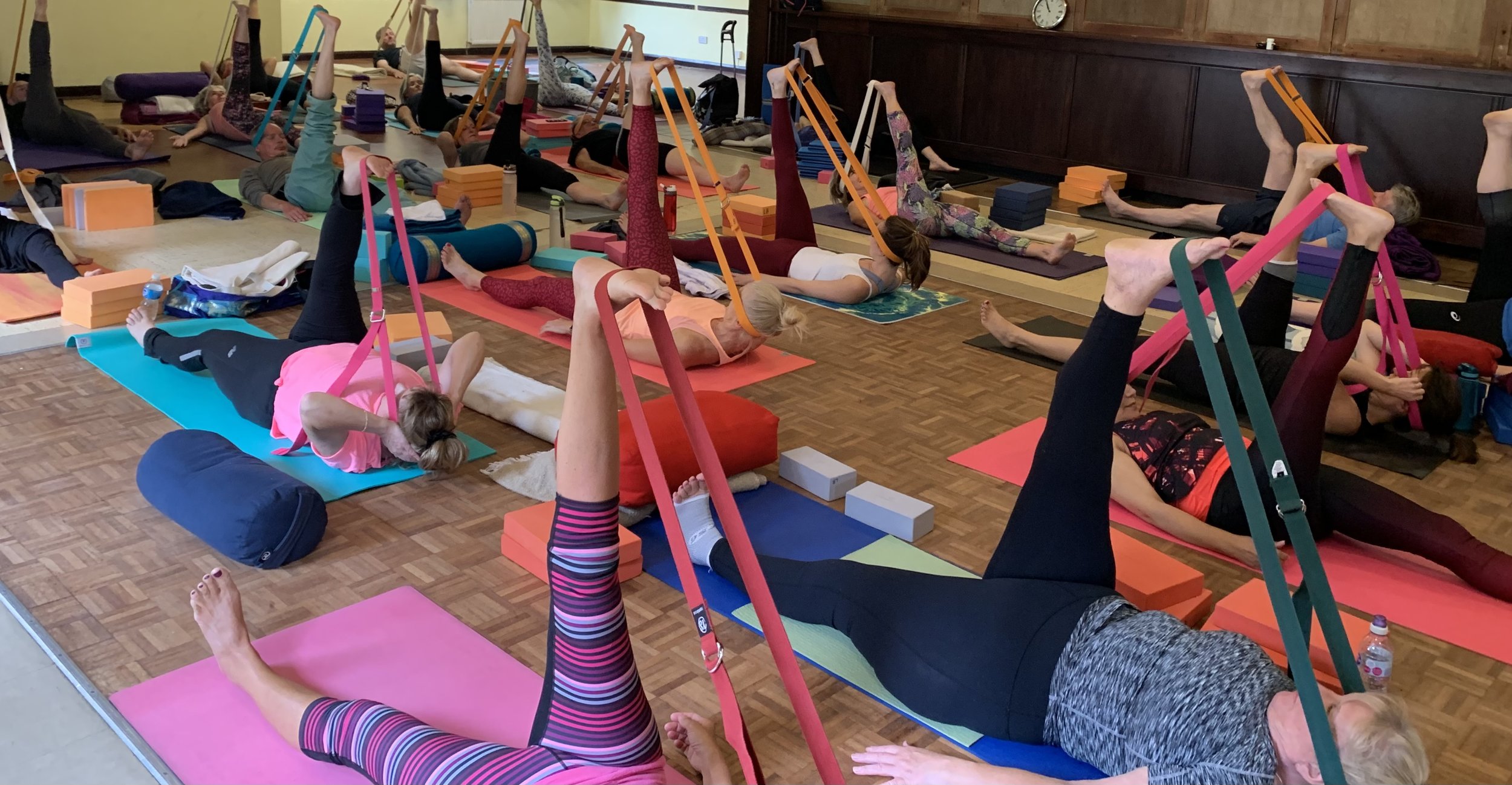What is Iyengar yoga?
Iyengar Yoga is a system of practice developed by BKS Iyengar, based on the principles outlined in the ancient text, ‘The Yoga Sutras of Patañjāli'. It is a clear, precise and dynamic system of yoga with a strong emphasis on correct anatomical alignment of the body. To achieve this, Iyengar developed the use of ‘props’ such as blocks and belts to ensure students develop in a safe, progressive and systematic manner. It is a challenging practice but can be tailored to everyones individual needs with the use of this yoga equipment. It is accessible to all regardless of age, gender, ability, flexibility, body shape or health condition.
The postures are held for some time so that our awareness of ourselves can deepen - a process Iyengar called ‘meditation in action’. Every class is different, studying the various groups of poses and for more experienced students, pranayama (control of the breath) is also included regularly.
Through regular practice of Iyengar Yoga you can expect to:
Improve your posture
Improve your general health
Increase your strength along with your flexibility
Improve your balance and stamina
Improve your concentration and stabilise emotions
Experience a general sense of wellbeing - many people report reduced stress and anxiety levels and improved sleep
Beginners first establish a strong foundation in the introductory syllabus of poses before progressing on to more challenging asana.
Who was BKS Iyengar?
Bellur Krishnamachar Sundararaja Iyengar was born 14 December 1918 in the midst of the flu pandemic in a small village in Southern India. One of thirteen children, he was a sickly infant surviving malaria, typhoid fever, tuberculosis and malnutrition. To improve his health, he was sent in 1934 to live with his sister and her husband Sri Tirumalai Krishnamacharya, who happened to be a yoga master and here his initiation into the subject began.
As a young man he began teaching yoga and in 1952 he caught the attention of concert violinist Yehudi Menuhin – an encounter that would eventually propel him from yoga teacher to international guru. Menuhin introduced him to other celebrities and word of BKS Iyengar quickly spread beyond India to the West, where he was invited to teach.
Meanwhile, in his personal life, Iyengar married Ramamani and they went on to have five children. His only son, Prashant, and eldest daughter Geeta followed in their father’s footsteps and are notable yogis and authors in their own right.
In 1966 he published ‘Light on Yoga’, the first of many books, which is the handbook (or bible!) of yoga for teachers and students around the world to this day. With over 600 monochrome photographs and clear instructions, the book caught the eye of the Inner London Education Authority who approached him about including yoga in their curriculum. As a result of this, the first ILEA approved yoga teacher training was initiated which is now considered to be the ‘gold standard’ in its field.
In 1975, as ‘Iyengar Yoga’ spread around the globe, he opened the ‘Ramamani Iyengar Memorial Yoga Institute’ in Pune, India. So called, because by this time Iyengar’s wife had sadly passed away. The centre welcomes hundreds of visiting yoga students every year to study for a month at a time at the ‘mother institute’ while also educating residents of the sprawling Indian city.
After a lifetime dedicated to yoga and his students, Iyengar passed away aged 95 on 20 August 2014 in Pune, where he had continued to practice daily for three hours or more in the main hall at RIMYI until his death.
Iyengar Yoga is now the most widely practiced form of yoga around the globe taught by thousands of qualified teachers worldwide. Following the death of Geeta in 2018, his granddaughter Abhijata and son Prashant have taken up the helm at RIMYI to take Iyengar Yoga into the future.




